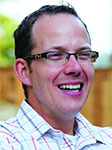 Perhaps it’s our long Canadian winters. Or maybe it’s the proliferation of other people’s glib Facebook status updates about their warm southern vacations. Every February, a general malaise seems to settle over the populace that can’t simply be explained by seasonal affective disorder, or countered by a new statutory holiday in some provinces. Perhaps the patron saint of February shouldn’t be Valentine but the irascible and slightly out-of-sorts Grumpy.
Perhaps it’s our long Canadian winters. Or maybe it’s the proliferation of other people’s glib Facebook status updates about their warm southern vacations. Every February, a general malaise seems to settle over the populace that can’t simply be explained by seasonal affective disorder, or countered by a new statutory holiday in some provinces. Perhaps the patron saint of February shouldn’t be Valentine but the irascible and slightly out-of-sorts Grumpy.
The true test of Christian discipleship during those February doldrums? Dealing with a telemarketer who calls over the dinner hour!
I was on the phone recently, however, and the lady commented, “You always seem cheerful. You must have been born that way!” Her remarks got me thinking about the intriguing roots of her statement: Is optimism a product of nature (genetics) or nurture (upbringing)?
Elaine Fox, a research professor in experimental psychology at Oxford University was posed the same question, but by a very different source – actor and poster child for optimism, Michael J. Fox (no relation). It turns out that Mr. Fox had read some of Dr. Fox’s research on monoamine oxidase A gene (which the media quickly dubbed the “optimist gene”). He asked her to fly to New York and test his DNA to see if he might possess what’s known as the “high-expression” form of that gene, thought to hard-wire people for optimism.
Cultivating optimism
But in Dr. Fox’s new book Rainy Brain, Sunny Brain: How to Retrain Your Brain to Overcome Pessimism and Achieve a More Positive Outlook, she explains that pessimism, as well as optimism, can be learned. Here’s what she told Maclean’s magazine:
“If you imagine water cutting a pathway through sand, the more the water runs down one pathway, the more entrenched the riverbed will become. It’s a little bit like that in the brain. These circuits of chemicals are set up so that the more you zone in on the negative, the more your brain learns to tune in to the negative.
“The thing is, it’s sand, not stone. It’s not easy, but with effort we can change the way we see things and that does lead to structural changes in the brain.”
It turns out both optimism and pessimism can actually be cultivated. “The brain circuits underlying our [pessimistic] brain and our [optimistic] brain are among the most plastic in the human brain,” says Dr. Fox.
This got me thinking about our general disposition as Mennonite Brethren and as people of faith. What do we tend to be known for in our communities: optimism or pessimism? Dr. Fox’s research would suggest that whatever historical pathways have existed, you and I can choose by our attitudes and actions what kind of path we want to cut in our families, our churches, our companies, and even in our country over time.
Scripture reminds us, after all, that “a cheerful heart is good medicine, but a crushed spirit dries up the bones” (Proverbs 17:22).
Perhaps this February, we might choose to cut a new path by speaking words of encouragement and blessing. We just might lead others into the adventure of incurable optimism.
 —Brad Sumner is happy to be the pastor of Jericho Ridge Community (MB) Church, Langley, B.C.
—Brad Sumner is happy to be the pastor of Jericho Ridge Community (MB) Church, Langley, B.C.